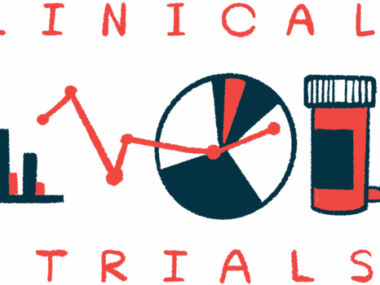SCD patients free of VOEs after gene-editing therapy reni-cel: Data
All RUBY trial patients remain free of vaso-occlusive events for 2-22 months
Written by |

All 18 adults with severe sickle cell disease (SCD) treated with the gene-editing therapy renizgamglogene autogedtemcel — known as reni-cel — remained free of vaso-occlusive events, or VOEs, for up to nearly two years, according to new interim data from the Phase 1/2/3 RUBY clinical trial.
The therapy, being developed by Editas Medicine, also normalized total hemoglobin levels and was well tolerated, with a safety profile consistent with a stem cell transplant and the chemotherapy conditioning regimen that precedes it.
“I am encouraged by these results from the RUBY trial, demonstrating this investigational gene-editing medicine has been well-tolerated and shows promising efficacy for people living with sickle cell disease,” Rabi Hanna, MD, a RUBY investigator and chairman of the division of pediatric hematology oncology and blood and marrow transplantation at Cleveland Clinic Children’s, in Ohio, said in a company press release highlighting the new data.
“Treatment with reni-cel showed a favorable safety profile and promising preliminary efficacy, supporting further investigation as a differentiated gene-edited medicine for patients with SCD,” Hanna said. “We look forward to continuing to evaluate its effectiveness on this patient population in need of treatment options.”
Hanna shared these findings in an oral presentation at the European Hematology Association (EHA) Hybrid Congress 2024, held earlier this month in Spain.
Reni-cel is designed to boost production of fetal hemoglobin in patients
People with SCD carry mutations that lead to the production of an abnormal form of adult hemoglobin, which is the protein that transports oxygen in red blood cells. As a result, these cells adopt a sickle-like shape and die prematurely, leading to a shortage of red blood cells, or anemia, one of the most common symptoms of SCD.
Vaso-occlusive events or VOEs — which include painful vaso-occlusive crises, or VOCs, as well as other SCD complications — occur when sickled cells form clumps and block blood flow, depriving tissues of oxygen.
Reni-cel, formerly known as EDIT-301, is designed to boost the production of fetal hemoglobin, or HbF. This version of hemoglobin typically is produced in early fetal development, but normally stops being made shortly after birth. HbF, however, is more efficient at carrying oxygen than is its adult counterpart.
Specifically, reni-cel works by using AsCas12a, a new proprietary gene-editing enzyme, to introduce genetic changes that mimic those that naturally occur in people with hereditary persistence of fetal hemoglobin — a benign condition in which HbF continues being produced into adulthood.
Treatment first involves collecting hematopoietic stem cells, which give rise to blood cells, from a patient’s bone marrow. These cells are genetically modified to make high levels of HbF and are then infused back into the patient via a stem cell transplant, which is preceded by a course of chemotherapy to destroy stem cells in the bone marrow and make room for the edited ones. The modified stem cells are then expected to give rise to red blood cells that are capable of producing HbF, which in turn is expected to reduce the likelihood of sickling and SCD complications like VOCs.
The Phase 1/2/3 RUBY trial (NCT04853576), being conducted at study sites in the U.S. and Canada, is evaluating the safety and efficacy of a single infusion of reni-cel in about 40 patients, ages 12-50, with severe SCD. To be eligible, patients must have had at least two severe VOEs per year in the two years before entering the study. Severe VOEs were defined as episodes of acute pain or other complications associated with blood vessel obstruction that required medical attention despite treatment with hydroxyurea or other supportive care measures.
Patients given gene-editing therapy free of VOEs for up to nearly 2 years
At the EHA Congress, Hanna shared data from the first 18 patients infused with reni-cel. Her oral presentation was titled “Reni-cel, the first AsCas12a gene-edited cell therapy, led to hemoglobin normalization and increased fetal hemoglobin in severe sickle cell disease patients in an interim analysis of the RUBY trial.”
These patients ranged in age from 18 to 35, and half were women. In the two years prior to the study, the patients experienced a mean of 5.2 severe VOEs per year.
In line with the first two patients dosed, all 18 participants have been free of VOEs since receiving a reni-cel infusion — with follow-up ranging from 2.4 to 22.8 months, or nearly two years.
Among nine patients with at least six months of follow-up, reni-cel increased total hemoglobin levels into the normal range, with a mean of 14.3 g/dL at six months. At the same time, HbF levels reached 48.5% in all 10 patients with six months of follow-up.
Markers of hemolysis, or red blood cell destruction, either normalized or started displaying a trend toward normalization in all treated patients.
The mean percentage of HbF-producing red blood cells increased early and was sustained at levels higher than 90% among all 12 patients with at least four months of follow-up.
Mean corpuscular fetal hemoglobin — the average hemoglobin levels — in HbF-containing red cells remained above the sickling threshold in all 14 patients with at least three months of follow-up.
All patients demonstrated successful engraftment, meaning the transplanted stem cells survived and expanded within the bone marrow, repopulating the body with new blood cells.
These data … support our belief that reni-cel has the potential to be a best-in-class and clinically differentiated, one-time, durable medicine that can provide life-changing clinical benefits to patients.
Reni-cel has been well tolerated, with no serious safety-related events reported. All side effects noted so far have been those associated with a stem cell transplant and the chemotherapy conditioning regimen that precedes it.
“These data … support our belief that reni-cel has the potential to be a best-in-class and clinically differentiated, one-time, durable medicine that can provide life-changing clinical benefits to patients,” said Baisong Mei, MD, PhD, Editas’ chief medical officer.
Mei noted that more than 20 patients have been dosed to date in the RUBY trial, and added that the study has “opened and enrolled patients in the adolescent cohort [group].”
“I would like to thank the participants, their families and caregivers, clinicians, and colleagues at collaborating institutions that contribute to the RUBY trial,” Mei said.







